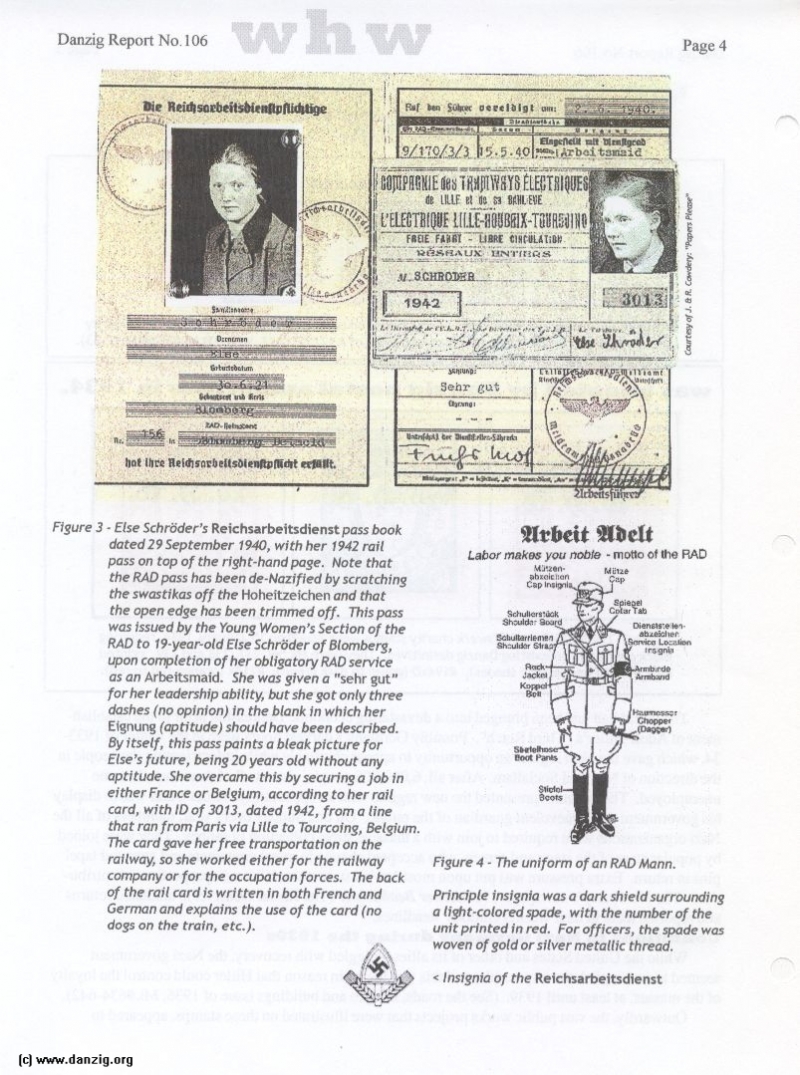
> Conditions in Nazi Germany during the 1930s
Figure 3: Else Schröder’s Reichsarbettsdlenst pass book dot ed 29 September 1940, wIth her 1942 raIl pass on top of the right-hand page. Note that the RAD pass has been de-Nazifled by scratching the swastikas off the Hoheitzeichen and that the open edge has been trimmed off. This pass was Issued by the Young Women’s Section of the PAD to 19-year-old Else Schröder of BIomberg, upon corr,let1on of her obligatoty RAD service as an Arbeittsmaid. She was given a “sehr gut” for her leadership ability, but she got only three dashes (no opinion) in the blank In which her Eignung (optitude) should have been described. By Itself, this pass paints a bleak picture for Else’s future, being 20 years old without any aptitude. She overcome this bysecurlnga job in either France or Belgium, according to her rail card, with IDof 3013, dated 1942, from a line that ran from Paris via LIUe to Tourcoing. Belgium. The card gave her free transportation on the railway, so she worked efther for the railway company or for the occztIon forces. The back of the rail card Is written in both French and German and explains the use of the card (no dogs on the train, etc.).
FIgure 4: The uniform of an RAD Mann.
Principle insignia was a dark shield surrounding a light-colored spade, with the number of the unit printed in red. For officers, the spade was woven of gold or silver metallic thread.
Danzig Report Nr. 106 - January - February - March - 2000, Page 4.
Hits: 3738
Added: 26/07/2015
Copyright: 2025 Danzig.org

